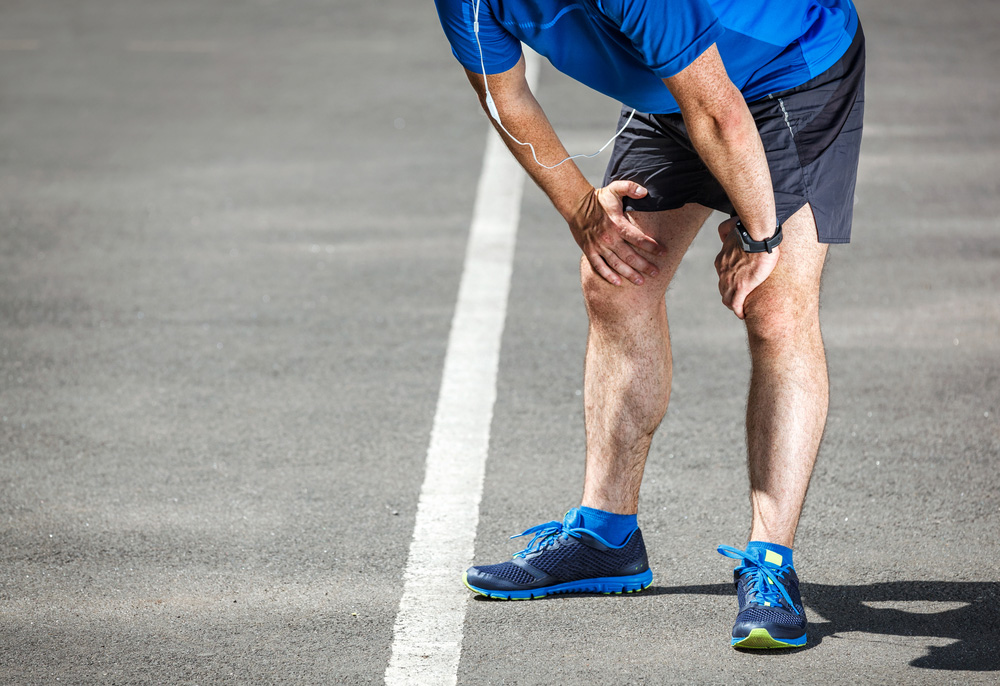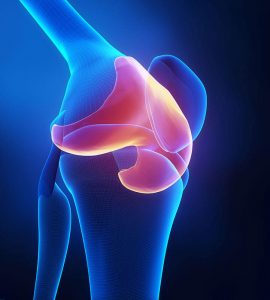
Understanding Its Causes, Symptoms, Risk Factors, and Diagnosis
Runner’s knee, medically referred to as patellofemoral pain syndrome (PFPS), is one of the most common causes of anterior knee pain — especially in athletes and active individuals. As the name suggests, it frequently affects runners, but it can impact anyone who engages in repetitive knee movement or prolonged activities involving knee bending.
At Quantum Orthopaedics, we take a comprehensive approach to diagnosing and managing runner’s knee, helping patients of all activity levels return to movement, sport, and everyday life without pain.
What Is Runner’s Knee?
Runner’s knee is a condition where pain develops in the front of the knee and around the patella (kneecap), particularly where the patella meets the femur (thigh bone). The kneecap normally glides smoothly through a groove at the end of the femur as the knee bends and straightens.
In people with runner’s knee, this movement becomes imbalanced or misaligned, causing friction, irritation, and discomfort. This condition is classified as an overuse injury, meaning it develops gradually due to stress and strain on the knee over time rather than from a single traumatic event.
Although most common among runners, the condition also affects:
- Hikers
Cyclists - Gym-goers
- Office workers who sit for long periods
- Adolescents going through growth spurts
- Individuals with poor lower limb biomechanics
Symptoms of Runner’s Knee
Symptoms of runner’s knee usually develop gradually, rather than suddenly, and may vary in intensity. Most patients describe a dull, aching pain at the front of the knee that worsens with specific movements.
Common symptoms include:
- Pain around or behind the kneecap, especially when bending the knee (e.g. during squats, stairs, or running)
- Pain after prolonged sitting with the knees bent (“theatre sign”)
- A popping, grinding, or clicking sensation in the knee during movement
- Tenderness along the borders of the kneecap
- Swelling or a feeling of tightness in the front of the knee
- Discomfort when walking downhill or descending stairs
Pain is typically activity-related and may initially disappear with rest — but if left untreated, it can become constant or worsen over time.
For a detailed evaluation of your knee and an accurate diagnosis,
please contact us at 8028 4572 today.
How Is Runner’s Knee Diagnosed?
Diagnosis of runner’s knee involves a comprehensive clinical assessment by an orthopaedic specialist. The aim is to rule out other causes of anterior knee pain and identify any underlying biomechanical issues.
The diagnostic process may include:
1. Medical History
- Onset, duration, and nature of the pain
Type and frequency of physical activity - Any recent changes in training routine
- History of prior knee injuries or surgeries
2. Physical Examination
- Observation of gait, posture, and patellar movement
- Palpation of the patella and surrounding soft tissues
- Assessment of muscle strength and flexibility
- Functional tests (e.g., squatting, step-down test)
3. Imaging Studies
In most cases, imaging is not required. However, your specialist may recommend:
- X-rays to evaluate joint alignment or rule out arthritis or bone abnormalities
- MRI scans if soft tissue damage (e.g. cartilage wear, tendon injury) is suspected
- Ultrasound for dynamic evaluation of the patellar tendon or joint fluid
Causes of Runner’s Knee
Runner’s knee doesn’t usually result from a single cause. Instead, it typically develops from a combination of mechanical, anatomical, and training-related factors. Understanding these underlying contributors is essential to treating the condition effectively.
1. Overuse and Repetitive Stress
The most common cause of runner’s knee is repetitive bending and straightening of the knee joint during activities like running, squatting, or stair climbing. This repetitive motion places stress on the patellofemoral joint, which can irritate the surrounding cartilage and soft tissues.
2. Malalignment or Poor Patellar Tracking
If the kneecap does not move properly along the groove of the femur during knee movement, it can cause excessive pressure on certain parts of the joint. This often results from anatomical abnormalities such as:
- Flat feet (overpronation)
- Knock knees (valgus alignment)
- High-riding patella (patella alta)
- Femoral or tibial torsion (twisting of the thigh or shin bone)
3. Muscle Imbalances or Weakness
Weakness or imbalance in the surrounding muscles — especially the quadriceps, hip abductors, and glutes — can affect patellar tracking. When the vastus medialis obliquus (VMO) is underactive, for example, the patella may drift laterally, increasing stress on the outer knee.
4. Tight Muscles or Soft Tissues
Shortened or tight structures, such as the hamstrings, quadriceps, iliotibial (IT) band, or calf muscles, can place uneven pressure on the kneecap and prevent smooth motion.
5. Improper Training or Technique
Sudden increases in training intensity, poor footwear, running on hard or uneven surfaces, or inadequate warm-ups can contribute to the onset of symptoms. Improper running or jumping mechanics are also significant risk factors.
If you’re struggling with knee pain while running, climbing stairs, or sitting for long periods, don’t wait for it to become a chronic issue.
Runner’s knee is highly treatable, especially when addressed early.
Who Is at Risk of Runner’s Knee?
While anyone can develop runner’s knee, certain groups are at higher risk due to their anatomy, training habits, or activity levels.
High-risk individuals include:
- Runners increasing their mileage too quickly
- Cyclists with improper bike setup
- Athletes in jumping or pivoting sports (e.g. basketball, volleyball)
- Dancers and martial artists
- Teenagers experiencing rapid growth
- Women, due to wider hips, which can affect knee alignment
- Sedentary individuals who sit for extended periods without movement
Recognising these risk factors allows early intervention and prevention through strengthening and biomechanical correction.
Is Runner’s Knee the Same as Patellar Tendonitis?
No — while they both involve pain in the front of the knee, they are distinct conditions:
- Runner’s knee (PFPS) involves irritation in the patellofemoral joint and is usually related to tracking or alignment issues.
- Patellar tendonitis (jumper’s knee) involves inflammation or microtears in the patellar tendon, often due to repetitive jumping or load-bearing stress.
Your orthopaedic specialist can distinguish between the two through clinical examination and symptom patterns.
Treatment Overview
Treatment for runner’s knee is non-surgical in most cases and focuses on relieving pain, correcting contributing factors, and restoring pain-free movement.
Initial treatment may include:
- Rest and reduction of aggravating activities
- Ice and anti-inflammatory medications
- Physiotherapy targeting muscle imbalances
- Patellar taping or bracing for support
- Addressing footwear and gait abnormalities
Most patients recover well with structured rehab, although early intervention is key to avoiding chronic pain or more serious complications.
Frequently Asked Questions (FAQs)
1. Can I keep running with runner’s knee?
It depends on the severity of your symptoms. Mild cases may improve with rest and physiotherapy, but continuing to run through pain can worsen the condition. A specialist can advise on safe modifications.
2. Is runner’s knee permanent?
No. With the right treatment and corrective exercises, most patients make a full recovery. However, ignoring symptoms or returning to activity too soon can lead to chronic issues.
3. Do I need surgery for runner’s knee?
Surgery is very rarely needed for runner’s knee. Non-surgical treatments — including physiotherapy, muscle reconditioning, and biomechanical correction — are effective in the vast majority of cases.
4. How long does it take to recover from runner’s knee?
Recovery varies, but most patients see improvement within 4–8 weeks of consistent treatment. More chronic cases may take several months, especially if significant muscle imbalances or alignment issues are present.
5. Can flat feet cause runner’s knee?
Yes. Flat feet can alter lower limb alignment and contribute to poor patellar tracking. Addressing foot mechanics with orthotics or footwear changes can play a key role in recovery.




